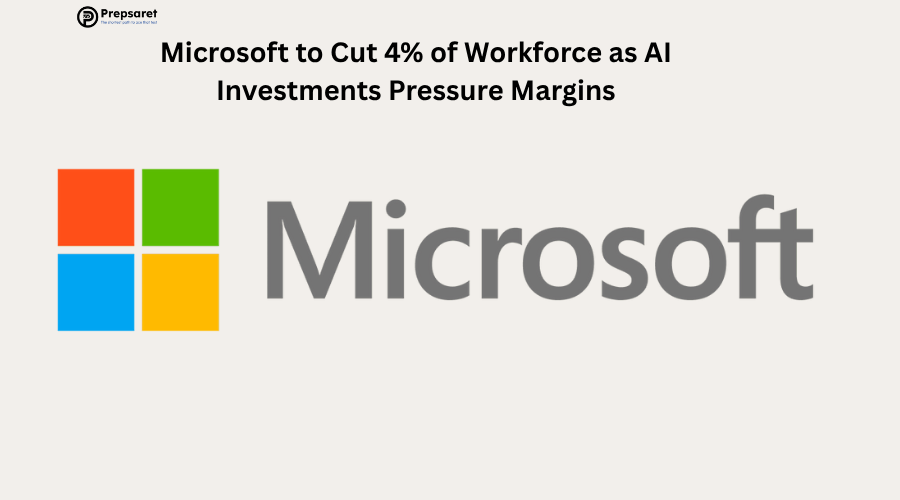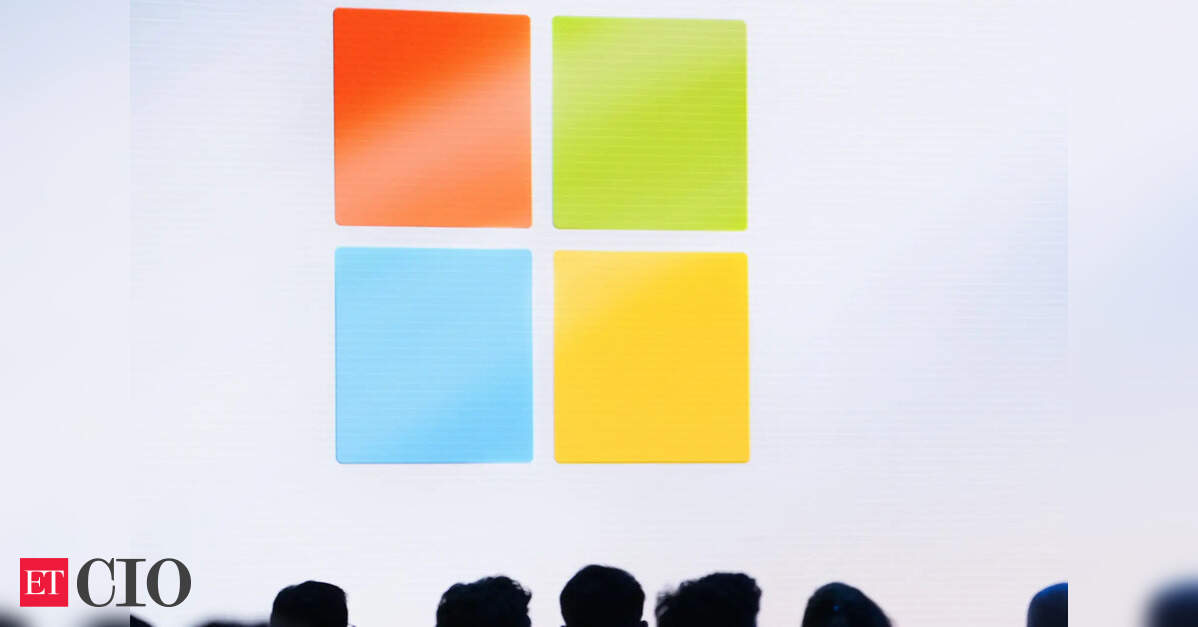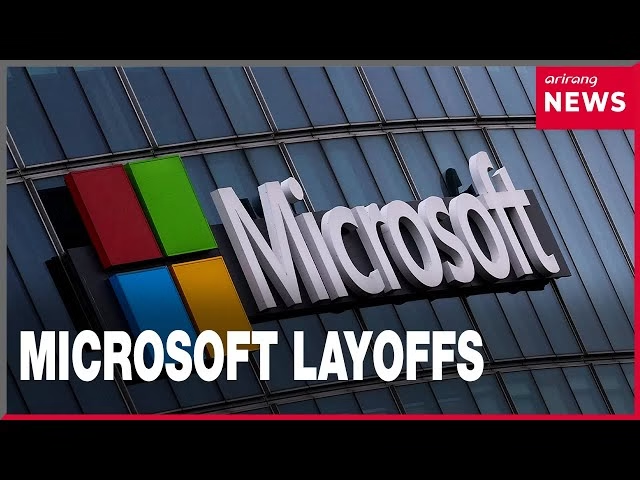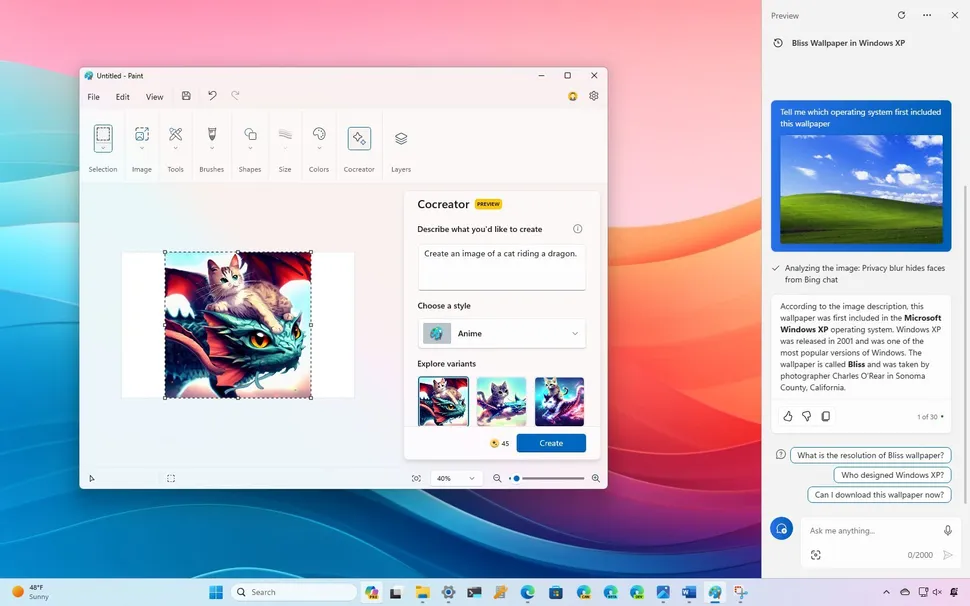Unpacking the Paradox: Why Microsoft AI Investment Layoffs Are Reshaping the Tech Landscape
Estimated reading time: 10-12 minutes
Key Takeaways
- Microsoft is implementing significant layoffs despite record profitability, driven by a strategic pivot towards massive AI investments.
- These workforce reductions are part of a broader trend of tech giant job cuts, influenced by macroeconomic pressures and post-pandemic recalibration.
- Primary reasons for Microsoft’s layoffs include an $80 billion investment in AI infrastructure, a drive for organizational efficiency, and strategic prioritization of high-growth AI and cloud segments.
- AI tools like Copilot are automating tasks, directly impacting job roles and shifting resources from operational expenditures (salaries) to capital expenditures (AI infrastructure), leading to a skills mismatch.
- Beyond AI, other factors such as slowing global tech spending, a correction from pandemic over-hiring, and a sharp focus on profitability are also contributing to Microsoft’s workforce adjustments.
- The layoffs signal a significant industry shift, where adaptability and continuous learning of AI-centric skills will be paramount for future employment in tech.
Table of Contents
- Introduction: Unpacking the Connection – Microsoft AI Investment Layoffs Explained
- The Broader Landscape: Tech Giant Job Cuts in Context
- Core Question: Why Microsoft Is Laying Off Employees – A Multifaceted Answer
- The Direct Link: AI Infrastructure Spending Impact on Jobs
- Beyond AI: Other Key Microsoft Workforce Reduction Reasons
- The Nuance of Workforce Adjustments: More Than Just “Cuts”
- Future Outlook: What These Microsoft AI Investment Layoffs Signify for the Industry
- Conclusion: A Complex Equation of AI, Economy, and Strategy
- Frequently Asked Questions
Introduction: Unpacking the Connection – Microsoft AI Investment Layoffs Explained
In an era defined by rapid technological advancement, few companies embody innovation quite like Microsoft. Yet, recent headlines have presented a curious paradox: Microsoft, a leading tech giant and a beacon of technological progress, has been implementing substantial microsoft ai investment layoffs amidst a period of record profitability and an aggressive strategic shift towards artificial intelligence. This seemingly contradictory move has sparked widespread curiosity and concern across the industry and beyond. As Microsoft, a global technology leader, has made headlines by implementing substantial layoffs amid a period of record profitability and an aggressive strategic shift, it forces us to ask: “Why is Microsoft reducing its workforce at a time of strong financial performance, especially as it doubles down on AI investments?”

The core issue we aim to unpack in this blog post is understanding the intricate relationship between Microsoft’s ambitious AI pursuits and its profound decisions around workforce reduction. It’s not a simple case of “AI replaces jobs,” but rather a nuanced interplay of economic forces, strategic repositioning, and the disruptive power of new technologies. We delve into the underlying reasons, exploring how the company’s significant financial health coexists with its decisions to streamline its workforce. This dynamic is central to comprehending not just Microsoft’s future trajectory, but also the broader implications for the global tech landscape. The objective here is to illuminate the strategic thinking behind these complex choices, demonstrating that the microsoft ai investment layoffs are a calculated move, and to provide clarity on why microsoft is laying off employees even as it pushes the boundaries of AI. As this move has sparked widespread curiosity: Why is Microsoft reducing its workforce at a time of strong financial performance, especially as it doubles down on AI investments? The core issue is understanding the relationship between Microsoft’s AI ambitions and its decisions around workforce reduction, we must look beyond superficial explanations.
The Broader Landscape: Tech Giant Job Cuts in Context
To truly understand Microsoft’s recent actions, it’s crucial to contextualize them within the wider industry. Microsoft’s layoffs are not an isolated incident; they are, in fact, part of a broader pattern of tech industry layoffs that has been observed across major technology companies globally. This trend has been stretching into and throughout 2025, affecting some of the biggest names in the sector. These tech giant job cuts 2025 (or the recent period) have been spurred by a complex combination of external economic pressures and internal strategic adjustments, reflecting a significant recalibration across the entire tech ecosystem.

The first primary driver for these widespread cuts is Macroeconomic Headwinds. The global economy has been experiencing a period of uncertainty, characterized by a cooling economic climate, persistent inflationary pressures, and a notable reduction in enterprise IT spending. These external factors compel companies to optimize costs and streamline operations to maintain profitability and investor confidence. Businesses become more cautious with their budgets, leading to a slowdown in investment in new software, hardware, and services, which directly impacts the revenue streams of tech giants. Microsoft’s actions are part of a broader pattern of tech industry layoffs, stretching into 2025. Major technology companies—spurred by a combination of macroeconomic headwinds (such as a cooling global economy, inflation, and weaker enterprise spending) and the aftermath of rapid hiring during the pandemic—are recalibrating to optimize costs and align with new business priorities. This economic tightening creates an environment where efficiency becomes paramount.
Secondly, the industry is undergoing a Post-Pandemic Recalibration. The COVID-19 pandemic led to an unprecedented surge in demand for digital services and remote work solutions, prompting many tech firms, including Microsoft, to engage in rapid and extensive hiring sprees. Companies expanded their workforces quickly to meet what was perceived as sustained, elevated demand. However, as the world normalized and economic conditions shifted, it became clear that much of this growth was temporary or unsustainable. Companies are now in the process of “right-sizing” their workforce, aligning their headcount with more realistic and sustainable growth projections and new business priorities. This involves a strategic adjustment to account for the actual, long-term market demand rather than the pandemic-induced spike. It’s a move to ensure operational efficiency and agility in a dynamic market. In 2025 alone, over 22,000 workers have been laid off across the tech sector, frequently with company statements linking these cuts to major investments in AI and automation. This statistic underscores the dual pressure of economic reality and technological evolution shaping the current tech employment landscape.
Core Question: Why Microsoft Is Laying Off Employees – A Multifaceted Answer
Delving deeper into why microsoft is laying off employees reveals that while AI is undeniably a significant factor, these layoffs are part of a much larger, multifaceted strategic realignment. The microsoft workforce reduction reasons are interconnected, forming a complex puzzle of corporate evolution in a rapidly changing world. The primary reasons for Microsoft’s workforce reductions go well beyond mere efficiency drives. While AI is a central driver, the layoffs are also the outcome of a multifaceted strategic realignment.
- AI Investment: Perhaps the most compelling reason is Microsoft’s monumental commitment to Artificial Intelligence. The company is reallocating substantial resources to fund an astonishing $80 billion investment in AI infrastructure. This isn’t just a number; it represents a comprehensive effort to build state-of-the-art data centers, facilitate advanced AI model training, and expand its cloud services to consolidate Microsoft’s leadership in generative AI and related markets. Such a massive capital expenditure often necessitates a rigorous reevaluation of operational costs elsewhere within the organization. This investment is about securing future dominance, but it comes with immediate financial implications that influence workforce decisions. Microsoft is reallocating resources to fund an $80 billion investment in AI infrastructure—data centers, model training, and cloud services—aimed at consolidating its leadership in generative AI and related markets.
- Efficiency Redesign (Organizational Flattening): Microsoft’s strategic objective extends to “flattening” its organizational structure. This involves a concerted effort to leverage automation and eliminate redundancies, particularly within legacy departments and traditional mid-management roles. The goal is to streamline operations, reduce bureaucratic layers, and increase overall agility. By reducing the number of management tiers and automating routine tasks, Microsoft aims to create a more nimble and responsive organization capable of adapting quickly to market changes and technological shifts. This flattening isn’t just about cost-cutting; it’s about reshaping the very architecture of the company for future efficiency. The company seeks to ‘flatten’ its organization, leveraging automation and eliminating redundancies, particularly in legacy departments and mid-management roles.
- Strategic Growth Prioritization: Microsoft is meticulously prioritizing high-growth segments within its vast portfolio. This includes areas like AI development, cloud computing (e.g., Azure AI services), and the proliferation of AI-powered tools such as Copilot across its product suite. To fuel growth in these critical areas, the company is actively reducing headcount in divisions deemed less central to this ambitious future vision. This includes certain hardware divisions (like Xbox devices) and non-core services, allowing for a crucial reallocation of both talent and financial resources to strategic areas that promise the highest returns and competitive advantage in the AI era. It’s a clear signal that resources are being concentrated where the future growth lies. Microsoft is prioritizing high-growth segments (AI, cloud, Copilot, Azure AI) while reducing headcount in divisions less central to this vision, such as hardware (Xbox devices) and non-core services.

These reasons, taken together, paint a picture of a company undergoing a profound transformation, positioning itself not just to adapt to, but to lead the next wave of technological innovation driven by artificial intelligence. The layoffs, therefore, are less about immediate financial distress and more about a strategic re-engineering for long-term dominance.
The Direct Link: AI Infrastructure Spending Impact on Jobs
Microsoft’s enormous ai infrastructure spending impact on jobs within the company is multifaceted. This isn’t merely about diverting funds; it’s also about the direct and transformative effects of AI technology on existing roles and the overall workforce structure. The shift is palpable and can be observed in several key areas. Microsoft’s massive AI spending directly affects jobs within the company in several ways.
- Automation and Efficiency: One of the most immediate impacts comes from the increased automation facilitated by AI tools. Microsoft’s own products, such as Copilot, are significantly automating tasks that previously required human intervention. For instance, Copilot now generates a remarkable up to 30% of company code. This direct automation means a reduced need for certain traditional engineering roles that previously performed these tasks manually. The efficiency gains are undeniable, but they inevitably lead to redundancies in areas where human effort is now supplemented or entirely replaced by AI-driven systems. This isn’t a future prediction; it’s a present reality shaping daily operations. Tools like Copilot now generate up to 30% of company code, meaning fewer traditional engineering roles are required.
- Resource Shift (CapEx vs. OpEx): A critical aspect of these layoffs is the substantial reallocation of financial resources. Significant funds are being shifted from operational expenditures (OpEx), which typically include salaries and day-to-day running costs, to capital expenditure (CapEx) on AI infrastructure. This means that money previously allocated to paying employees is now being invested heavily in hardware, specialized software, and the construction and maintenance of vast data centers essential for AI development and deployment. This strategic financial pivot drives redundancy in roles not directly aligned with AI development, research, or direct deployment, as the company invests its capital in assets that scale AI capabilities rather than human labor in non-AI critical functions. Significant funds are reallocated from salaries to capital expenditure on AI infrastructure, driving redundancy in roles not aligned with AI development or deployment.
- New Roles, New Skills (Skills Mismatch): While Microsoft is indeed creating new positions in cutting-edge areas such as AI research, machine learning engineering, and AI operations, these roles often demand highly specialized skills. Expertise in areas like prompt engineering, AI ethics, advanced machine learning algorithms, and neural network architecture is critical. Such skills are typically not held by employees in the eliminated positions, leading to a significant skills mismatch. This means that even with new job creation, there isn’t a one-to-one job replacement for those laid off. The existing workforce, unless proactively reskilled, often lacks the specific competencies required for these emerging AI-centric roles, thus contributing to an overall workforce reduction in non-AI specific areas and a net reduction in headcount across the broader organization. While the company is creating new positions in AI research, engineering, and operations, these roles often demand specialized skills not held by employees in eliminated positions, leading to a skills mismatch rather than a one-to-one job replacement.


This complex interplay demonstrates that the impact of AI infrastructure spending goes far beyond simple financial figures; it is fundamentally reshaping the landscape of employment within Microsoft and setting a precedent for the wider tech industry.
Beyond AI: Other Key Microsoft Workforce Reduction Reasons
While Artificial Intelligence is a powerful catalyst for Microsoft’s recent workforce adjustments, it is by no means the sole driver. There are several other significant microsoft workforce reduction reasons that exist independently of, or in conjunction with, the massive AI investments. These factors paint a broader picture of a company responding to a complex and evolving global economic and technological landscape.
- Economic Pressures: The current layoffs are partly a direct response to a discernible slowdown in global tech spending. Businesses and consumers alike are becoming more cautious with their expenditures on tech products and services due to broader economic uncertainties. This cooling market demand, coupled with increased pressure from investors to maintain robust profitability margins, compels companies like Microsoft to undertake significant cost-cutting measures. In a period of economic tightening, every expenditure is scrutinized, and workforce costs, often the largest component of operational expenses, naturally become a target for optimization. The shift is partly a response to slowing tech spending globally and increased pressure from investors to maintain high profitability.
- Pandemic Correction (Over-Hiring): Like many other prominent tech firms, Microsoft is currently undergoing a necessary correction for the significant over-hiring that occurred during the unprecedented demand of the COVID-19 pandemic. During this period, the rapid acceleration of digital transformation and remote work solutions led companies to expand their workforces at an accelerated pace, anticipating a sustained surge in demand. However, as the world has navigated beyond the peak of the pandemic and demand patterns have normalized, Microsoft is now adjusting back to a more sustainable and efficient workforce size that aligns with current market conditions and more realistic long-term growth projections. This “right-sizing” is about achieving operational efficiency rather than merely reacting to a crisis. Like many tech firms, Microsoft is correcting for the over-hiring that occurred during the pandemic, aiming for a more sustainable workforce size.
- Strategic Streamlining and Consolidation: Microsoft has been actively undertaking internal initiatives aimed at consolidating various business units and has made strategic decisions to exit or scale down less profitable ventures. This deliberate strategic streamlining focuses resources intensely on areas with the highest growth potential, particularly in the burgeoning domains of AI and cloud services (e.g., Azure). Such consolidation inevitably leads to redundancies in other, less strategic, or underperforming divisions as resources and talent are reallocated to bolster the company’s core future competencies. This strategic pruning is vital for maintaining agility and focus in a competitive landscape. The company has consolidated business units and exited less profitable ventures, focusing resources on areas with the highest growth potential—especially in AI and cloud services.
- Profitability Focus and Shareholder Value: In a fiercely competitive market, particularly one racing for leadership in AI, demonstrating strong profitability is paramount for investor confidence and securing long-term growth. The layoffs are explicitly designed to optimize operational costs and, consequently, enhance shareholder value. By reducing overheads and streamlining operations, Microsoft aims to present a leaner, more profitable enterprise. This move signals to investors that the company is committed to financial discipline and efficiency, even while making massive long-term bets on AI. This strategic balance aims to ensure sustained financial health alongside technological leadership. Layoffs are designed to optimize operational costs and enhance shareholder value, particularly in a highly competitive market for AI leadership.

These multifaceted reasons underscore that Microsoft’s workforce adjustments are a complex response to a confluence of internal strategic imperatives and external market forces, extending well beyond the singular impact of AI.
The Nuance of Workforce Adjustments: More Than Just “Cuts”
It is easy to view large-scale layoffs purely as “cost-cutting” measures. However, Microsoft’s approach, while undeniably resulting in workforce reductions, is fundamentally about strategically realigning the company for future growth, particularly in the transformative domain of Artificial Intelligence. This nuance is crucial to understanding the full scope of the microsoft workforce reduction reasons. The company is not simply reducing expenses; it is meticulously reshaping its capabilities and focus to thrive in a highly automated, AI-driven future.
Microsoft is also making efforts to mitigate the impact on its workforce through various initiatives. The company is investing in internal reskilling programs and efforts designed to help some existing employees transition into new, AI-focused roles. These programs aim to equip employees with the specialized skills needed for the evolving demands of the industry, such as prompt engineering, AI development, and data science. The company is also investing in reskilling initiatives to help some employees transition into new, AI-focused roles, although broad reskilling is a complex and gradual process. This demonstrates an awareness of the human element in this massive shift.

However, it is equally important to acknowledge the inherent complexity of such large-scale organizational changes. While these reskilling programs exist and are valuable, the reality is that the sheer scale and rapid speed of technological change, particularly in AI, often create skill gaps that internal training alone cannot quickly or entirely bridge. The pace of innovation in AI is so fast that the skills required today might be different from those needed tomorrow. This creates a significant challenge for existing workforces to adapt at the necessary speed, leading to a situation where even with reskilling efforts, some roles become obsolete faster than new skills can be universally acquired. This leads to the unfortunate but unavoidable consequence of layoffs, as the company prioritizes agile adoption of new technologies and organizational structures essential for competitive advantage. The intent is not merely to cut, but to rebuild smarter, faster, and more focused on the leading edge of AI.
Future Outlook: What These Microsoft AI Investment Layoffs Signify for the Industry
The current wave of microsoft ai investment layoffs marks a significant watershed moment in the tech industry, providing crucial insights into how massive spending on AI infrastructure can fundamentally reshape workforce dynamics. These strategic decisions by a tech behemoth like Microsoft are not just about its internal operations; they cast a long shadow over the entire sector, signaling profound shifts in employment, required skills, and competitive strategies. The layoffs suggest a calculated risk by Microsoft to secure future dominance in the fiercely competitive global AI race, betting that a leaner, more AI-centric workforce will yield greater innovation and market share. These layoffs mark a watershed moment in tech, highlighting how massive spending on AI infrastructure can reshape workforce dynamics.

Looking ahead, the ai infrastructure spending impact on jobs is likely to continue shaping the broader tech industry. We can anticipate continued, profound shifts in the job market, with an escalating demand for highly specialized, AI-centric skills across virtually every sector. Roles focused on AI research, machine learning engineering, data science, prompt engineering, AI ethics, and human-AI interaction will become increasingly critical and sought after. Conversely, traditional roles that involve routine, repetitive tasks, or those that can be significantly augmented or automated by AI, are likely to face ongoing pressure and potential reduction. This implies a future where a substantial portion of the workforce will need to either pivot towards AI development and management or learn to effectively collaborate with AI systems.
This new era for tech employment means that adaptability and a commitment to continuous learning will not merely be advantages but absolute necessities. The ability to acquire new skills, particularly those related to AI, machine learning, and data analytics, will be paramount for career longevity and success. We can predict the potential for further workforce reductions in roles highly susceptible to AI-driven automation, not just within Microsoft but across the entire tech landscape. The long-term industry impact will be a labor market increasingly oriented toward AI expertise, presenting new opportunities for those equipped with these skills, but also significant disruption and challenges for those unable to adapt quickly. This signals a future where human ingenuity will increasingly focus on designing, managing, and improving AI, rather than performing tasks AI can handle. As Microsoft pursues dominance in generative AI, the tech industry is likely to see continued shifts in the job market, with growing demand for AI-centric skills and the potential for further workforce reductions in roles susceptible to automation.
Conclusion: A Complex Equation of AI, Economy, and Strategy
In summation, the microsoft ai investment layoffs are the intricate result of a complex interplay between rapid technological change—specifically the explosive growth and integration of Artificial Intelligence—prevailing economic realities, and astute strategic repositioning by Microsoft. These decisions are not unilateral; they are deeply influenced by macroeconomic pressures, market demands, and a forward-looking vision for the company’s future.

It is crucial to reiterate that while AI is undoubtedly a powerful catalyst and a primary driver for these significant decisions, the reasons behind the layoffs are multi-faceted. They encompass a blend of rigorous cost optimization, agile adaptation to dynamic market dynamics, and the imperative to remain fiercely competitive in an ever-evolving technological landscape. Microsoft is not merely reacting to market conditions; it is proactively shaping its structure and capabilities to lead the next era of computing. While AI is the primary catalyst, decisions are driven by a blend of cost optimization, market dynamics, and the imperative to remain competitive in an evolving tech landscape.
For Microsoft and the broader tech sector, future success will depend on a delicate but critical balance. This balance involves aggressively driving innovation in AI, implementing humane and thoughtful workforce management strategies, and proactively investing in skill development and reskilling initiatives. This proactive approach is essential to prepare the workforce for the profound shifts inherent in an AI-driven future, ensuring that progress in technology is matched by thoughtful human adaptation and empowerment. The path forward for leading tech companies will necessitate strategic foresight combined with a deep understanding of the societal and workforce implications of AI’s pervasive integration. For Microsoft and the broader sector, success will depend on balancing innovation with humane workforce management and proactive skill development.
Frequently Asked Questions
- Why is Microsoft laying off employees despite being profitable?
Microsoft’s layoffs are part of a strategic realignment, not solely due to unprofitability. Reasons include massive AI infrastructure investments, a drive to flatten organizational structures for efficiency, strategic prioritization of high-growth AI and cloud segments, and adjustments to global economic slowdowns and post-pandemic over-hiring.
- How are AI investments directly impacting jobs at Microsoft?
AI tools like Copilot are automating tasks (e.g., generating 30% of company code), reducing the need for certain traditional roles. Additionally, significant funds are being reallocated from operational expenditures (salaries) to capital expenditures (AI infrastructure), and while new AI-focused roles are created, there’s often a skills mismatch with the existing workforce, leading to redundancies.
- Are Microsoft’s layoffs unique, or part of a larger trend?
Microsoft’s actions are part of a broader pattern of tech industry layoffs observed across major technology companies. This trend is driven by macroeconomic headwinds (like inflation and reduced IT spending) and a recalibration after rapid hiring during the pandemic, as companies “right-size” for sustainable growth.
- What skills will be important for future employment in the tech industry given these shifts?
The tech industry is increasingly prioritizing AI-centric skills. Future roles will demand expertise in areas such as AI research, machine learning engineering, data science, prompt engineering, and AI ethics. Adaptability and a commitment to continuous learning of new technologies and skills will be paramount for career longevity.
- Does Microsoft offer reskilling programs for affected employees?
Yes, Microsoft is investing in internal reskilling initiatives to help some employees transition into new, AI-focused roles. However, the rapid pace of technological change means that while these programs are valuable, they cannot always bridge skill gaps quickly enough for all affected roles, leading to the unfortunate necessity of layoffs.






